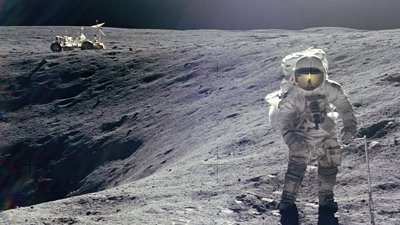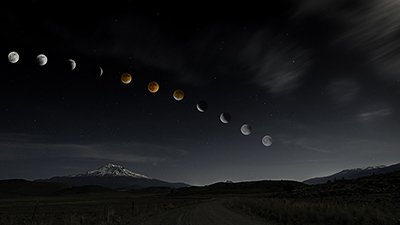A Blue Moon?
Kapow! That’s one small plume for man, one amazing new discovery for mankind.
News Source
- ScienceNOW: “The Moon Is Wet!”
Being the science geeks that we are, this story has all the elements of something we get excited about: spacecraft, a high-speed collision, and definitive evidence of water. Too bad the news reports don’t stick with the facts.
Last month, many observers were disappointed when LCROSS (Lunar Crater Observation and Sensing Satellite) slammed into the moon. The plume from that impact, which was supposed to be spectacular, proved anticlimactic to say the least, as most of the debris remained hidden behind a hill for those of us on earth.
But from the initial disappointment came an amazing discovery. We’ll let Anthony Colaprete, LCROSS project scientist and principal investigator from NASA’s Ames Research Center at Moffett Field, California, tell the news (via Live Science):
Indeed, yes, we found water. And we didn’t find just a little bit, we found a significant amount.
The plume, though smaller than expected, did allow scientists to take spectrographic measurements of the compounds found in the debris. Light is absorbed at different wavelengths by various compounds, which gave the scientists an opportunity to “see” which compounds were present in the dust. Two of the measurements (infrared and ultraviolet) revealed the signature for “water vapor, water ice, and hydroxyl ions produced when sunlight splits water molecules.”
All told, Colaprete estimates that the impact site on the moon’s south pole is likely “wetter than the Atacama Desert” in South America. If this bears out in other locations on the moon, humans may one day have abundant supplies of drinking water for long-term lunar missions.
So, how did the water get there? That’s where the facts go out the window and imagination runs wild. National Geographic News, for example, gives four possible theories for where the water came from: 1) pushed up by ancient volcanoes billions of years ago, 2) brewed by solar wind over billions of years, 3) deposited by asteroids and comets over billions of years, and 4) stolen from the earth billions of years ago. See if you notice the common element.
How did the water get there?
One theory is, not surprisingly, avoided:
God made the expanse, and separated the waters which were below the expanse from the waters which were above the expanse; and it was so. (Genesis 1:7)
The Bible has always explained that God “separated the waters” to make the expanse or firmament (i.e., what we see in the sky). It’s no surprise, then, that there should be water on the moon—and in many other places throughout the universe.
We should note the absence of “is there life?” speculations associated with this find. Perhaps this is simply because our moon is much more studied, along with the fact that the water was in frozen form. Most evidence of water in the solar system or beyond includes flights of fancy about whether alien fish or other life may take up residence there. After all, many evolutionists seem to suppose that life could’ve popped up with the first drop of rain—never mind that it doesn’t happen in the present on earth.
We’d much prefer the science, though. And, of course, God’s eyewitness account.
Further Reading
For More Information: Get Answers
Remember, if you see a news story that might merit some attention, let us know about it! (Note: if the story originates from the Associated Press, FOX News, MSNBC, the New York Times, or another major national media outlet, we will most likely have already heard about it.) And thanks to all of our readers who have submitted great news tips to us. If you didn’t catch all the latest News to Know, why not take a look to see what you’ve missed?
(Please note that links will take you directly to the source. Answers in Genesis is not responsible for content on the websites to which we refer. For more information, please see our Privacy Policy.)
Recommended Resources

Answers in Genesis is an apologetics ministry, dedicated to helping Christians defend their faith and proclaim the good news of Jesus Christ.
- Customer Service 800.778.3390
- Available Monday–Friday | 9 AM–5 PM ET
- © 2026 Answers in Genesis






